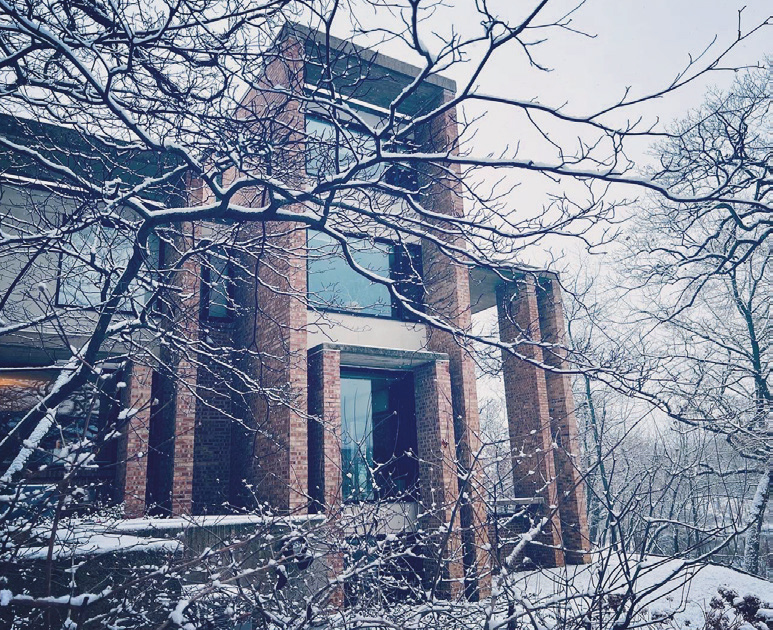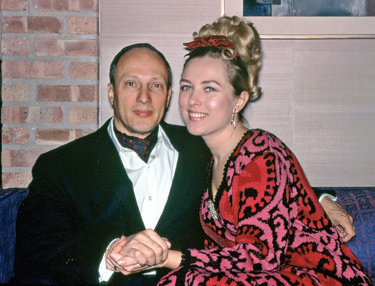
The long and winding road emerges into a clearing and then turns into a steep hillside. Here, in a moment of imagination you ask, where am I? Have I reached a Medieval fortress sited atop the highest point to watch over the surrounding countryside?
But no, you are seeing the felicitous result of a couple’s dream translated to the vision of an esteemed architect who was at one with his surroundings.
In 1962, Charlotte and Richard Henrich were moving from Michigan to Barrington Hills and met on this beautiful hillside with the Modernist architect Edward Dart. He was a graduate of the Yale School of Architecture and aged 40, already had a portfolio of residential, civic, and religious design commissions that would bring him a Fellowship in the American Institute of Architects when he was 44, and in his relatively short life, 18 AIA Awards.
On that day in 1962, the Henrichs and Dart soaked in the environment of this plateau, essentially then, in the middle of nowhere. But it was spectacular. The small lake down below was a wildlife destination, and they were so high above it that flights of birds flew by at eye level.
There were natural materials to be utilized here; Dart had become known for his affinity to working in wood and stone, slate, and glass. Here he added the simplicity of Chicago Common Brick. Client and architect became as one in their vision, and instead of designing horizontally into the hillside, which characterized much of Dart’s residential design, here the design evolved organically out of the hilltop, in columns of that Chicago Brick and expanses of glass.
The simplicity of the exterior is followed inside the three-story house. The openness of the rooms allows for magnificent views of the lake and the surrounding landscape. Brick and plaster, polished wood, and expanses of glass flow seamlessly throughout; polished wood and slate floors are a map from space to space. An open stairway and catwalks from level to level add to the ever-vertical soaring spaces.
Today this is a family home, restored, lived in, and loved. It has warmth that defies preconceived ideas of Mid-century Modernism, for Dart went beyond the aesthetics of steel and glass and concrete. Within two years of its completion in 1964, the house was featured in design and architecture publications. Today it is listed on the National Register of Historic Places.
Edward Dart and his wife Wilma were longtime residents of Barrington Hills, where Dart designed their homes. He died here in 1975 at the time he was designing Water Tower Place in Chicago. Much of his residential designs, in Barrington Hills and elsewhere, have been demolished.
In St. Paul’s Cathedral in London, a simple stone plaque commemorates the final resting place of its architect, Sir Christopher Wren. Part of its inscription: “Readers–if you want to see his monument look around you.”
For Edward Dart, a fitting monument can be found at the end of a long and winding road in Barrington Hills. It is surely one of his most inspired and enduring works.
. . . . . . . . .
Barbara L. Benson was born in Bromley, Kent and spent her childhood in WWII close to London.
Share this Story
